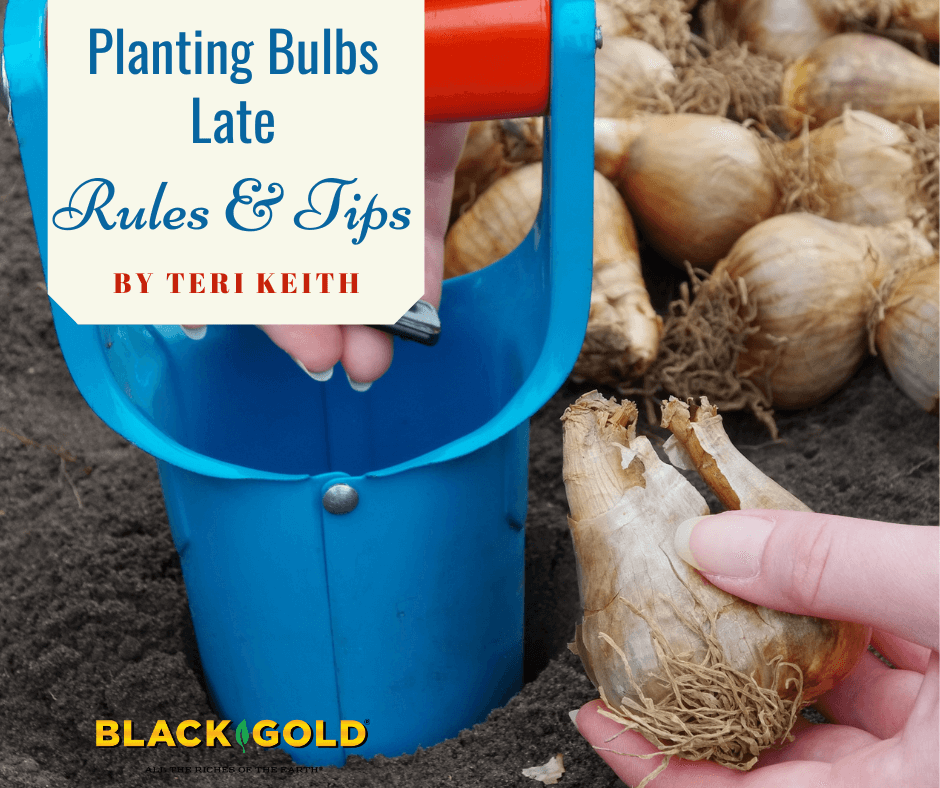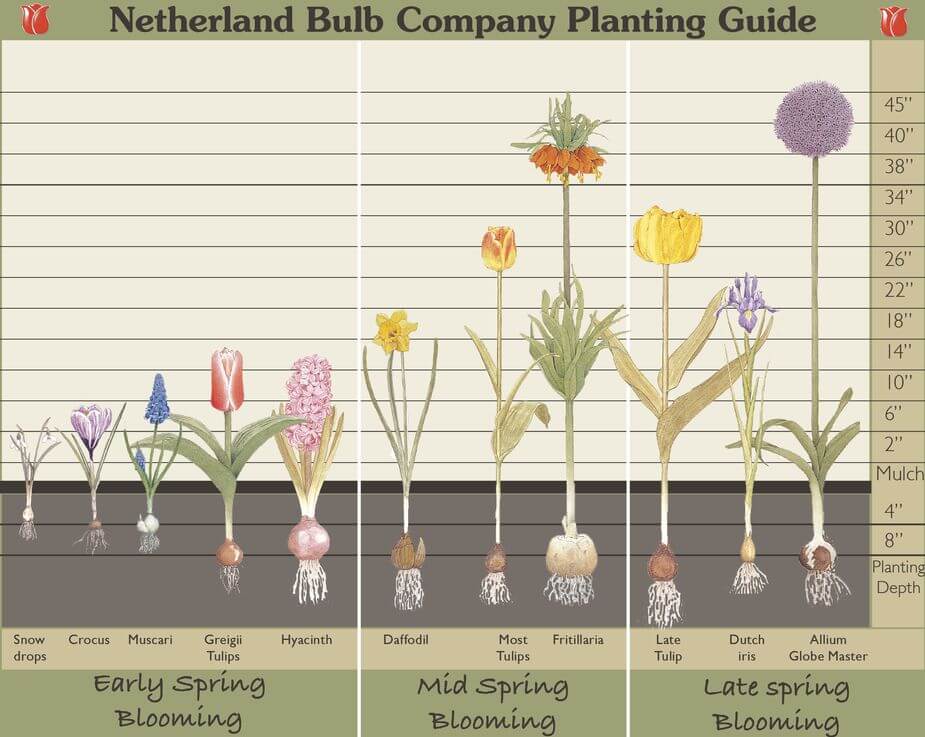
If your spring-blooming bulbs are sitting around somewhere, like mine, or you have not even bought them yet, you will be glad to know that it is not too late. Bulbs can be planted as late as November or December, as long as the soil has not frozen solid, and the bulbs are alive and healthy. You can even take advantage of sales in October or November, and save a little money.
How to Choose Healthy Bulbs

First, check any bulbs for good health before purchasing them. How can you tell when a bulb is healthy and alive or not? Healthy bulbs should be ivory, firm, and have papery coverings. (If you cannot see the flesh, just squeeze to make sure that they are firm.) It is especially important that the bottoms, where the roots are, remain firm and blemish- or mold-free. Dying or diseased bulbs have drying brown areas, brown or blue-green spots, or may even be soft and flakey. Never purchase bulbs with these traits. If one or two out of the bag appears to be in poor shape, it’s not a problem. Otherwise, you are wasting your money. For more bulb troubleshooting information read How Do You Keep Spring Bulbs from Rotting?
General Bulb-Planting Information
All bulbs like sunlight. Early bulbs can be planted beneath deciduous trees that often don’t leaf out until the spring bloomers have stopped flowering. All bulbs require well-drained soil. It helps to amend beds before planting bulbs with Black Gold Garden Soil or Garden Compost Blend. Be sure to have a sharp trowel, planting knife, or bulb planter on hand for fast, easy planting. Fertilization is also important. Throw a little Dutch bulb fertilizer or bone meal into each hole to promote better growth and flowering in spring. (Click here to learn more about the benefits of bone meal.) As soon as bulbs are planted, they begin to establish roots for the coming spring.
Planting Tips for Specific Bulbs
There are many different bulbs that you can plant and each requires different care. Here are my favorites.

Tulip (Tulipa hybrids, USDA Hardiness Zones 3-8) bulbs should be planted 7 to 8 inches deep, with the pointed tops facing upwards. Ideally, they need to be planted by early November to flower on time in spring. You can plant them a bit later, into early December, but they will likely bloom a little later as a consequence. Unfortunately, most hybrid tulips die away in just a couple of years, but some reliably return as perennials. These include species tulips, such as Tulipa praestans ‘Shogun’, which has sunny orange flowers, as well as Tulipa clusiana hybrids with their colorful, linear flowers and bulbs that naturalize over time. Also, tall hybrid Darwin Tulips look like most standard hybrids, but they will come back for years. They are a cross between old Darwin tulip and Tulipa fosteriana hybrids. Check out ‘World Peace’, which has deep-rose flowers furled with yellow, or ‘Cosmopolitan’ with its stately pink blooms and burgundy-striped leaves.
Bulbs are breakfast, lunch, and dinner to voles, mice, squirrels, and deer while being poisonous to humans, and, for whatever reason, cats (when would a cat ever eat a tulip?). (Click here to learn more about tulip toxicity.) These bright-colored flowers are among the most beautiful and varied in the spring garden, so they must be planted in pest-free areas or have some protection. I have two very large trees with wide roots that I like to plant bulbs around. The protective roots keep the voles from tunneling. The rest of my garden is a different matter, so I put thorny leaves or cat litter in the hole, to deter pests. When it comes to protecting the actual plants from deer or rodents, I’ve found that Plantskydd is an excellent repellent. It does not smell nice, but it works.

Daffodils (Narcissus hybrids, Zones 4-8) are another story. They are poisonous enough so that voles or deer will not eat them. One daffodil will form a clump in just a few years and over decades will naturalize. They do not die, which is why you will see them blooming in front of old, abandoned houses. They can be planted up to December so long as the ground is not frozen. Daffodils come in many sizes, shapes, and colors. They bloom in early, mid, or late spring, depending on the variety. Premium bulbs often have multiple offsets while standard bulbs are single. Plant them 7 to 8 inches deep.

Siberian squill (Scilla siberica, Zones 2-8) is one of my favorite early spring flowers. The small plants only reach 4 to 6 inches tall with bell-shaped flowers of the most intense blue. They spread gently among beds, under shrubs, and even into lawns. By the time it is time to start mowing the grass, they are already dormant. Siberian squill are pest resistant and poisonous to humans, so do not grow them where children play. Plant them 3 to 4 inches deep as late as December. Those planted a bit late may emerge later in the first year.

Crocus (Crocus hybrids, Zones 3-8) are a sure sign that spring is just around the corner. Some even push up through the snow. You can plant them in 4-inch holes after a hard frost while the soil is still workable. Crocuses require a long cooling period, so don’t plant them past late November. They make excellent additions to lawns, small garden corners, and rock gardens. A single crocus will form a clump over several years and then spread to other spots in the garden.
(For more bulb ideas, read What Spring Bulbs are Good for Bees and Hummingbirds?, Blooms in the Ice: The Joy of Late Winter Bulbs, and Flamboyant Parrot Tulips for a Fabulous Spring.)
So, don’t fear planting spring bulbs late, if you lost track of time or want to take advantage of seasonal bargains. You may see them emerge a little later in the first season but without detriment to their long-term success.

